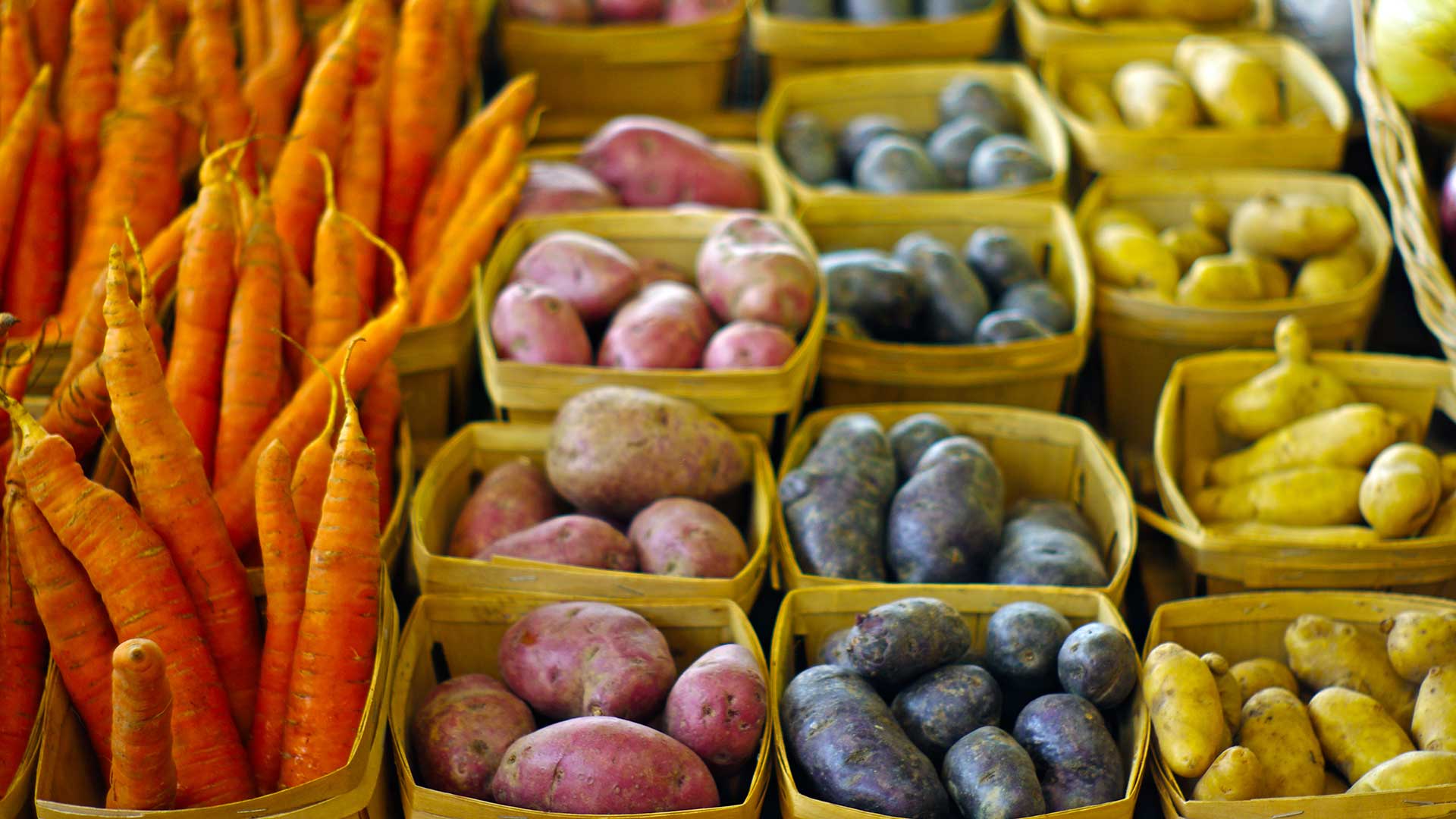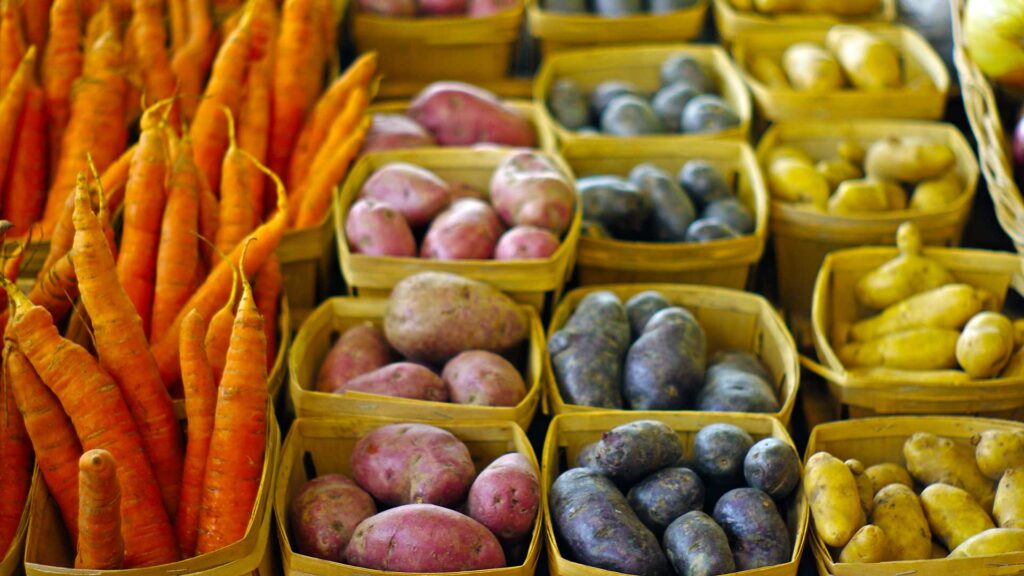Vegetables able to thrive in cool – sometimes cold – growing conditions are referred to as cool season crops. In northern regions, early and late seasonally cool weather gives the gardener an opportunity to plan and execute two cool crop cycles within the same growing year. One planting may be geared toward very early spring, the second timed to end with a late fall/early winter harvest. Most of the cool season crops go to seed or become bitter and/or inedible when hit with summer heat, making planting times crucial. With careful planning, grabbing a bit of extra crop time from Momma Nature is doable.
Spring planting can begin quite early. As these plants love, and thrive in, cool germination and growing conditions the seedlings will shrug off most minor, early spring frosts. Cool season crops are happy planted into well-worked garden bed(s) as soon as the soil temperatures have reached, in general, 40 – 50 degrees F, usually one to two weeks before the last spring frost date (splurge and buy a soil thermometer/probe for accurate temperature readings). Germination failures, at low soil temperatures, are generally found in cool season crops only when seed planting is coupled with excessively wet and/or compacted soils. When it is time to thin the seedlings of most cool season crops, opt for cutting out unwanted plants rather than pulling. This technique reduces the root disturbance on surrounding seedlings.
Timing of fall harvest plantings are crop dependent. Check the seed information for each crop, noting maturation periods. Walk back each specific maturation period from the first fall frost date to determine the last seeding date opportunity. Figuring out when the fall frost is coming gives you enough time to allow plants to mature before death by frost happens. Easy enough. Walk that seeding date back a couple more weeks if you want two sequential crops before the frost. Do be aware that, in general, cool season crops are tolerant of frost on the seedlings more so in the spring and much less so on the more mature plants in fall. Exceptions to that are some of the Cole crops e.g., Brussels sprouts, kale.
If, like all ambitious gardeners, you want to push the growing season on one end or the other, plan to have row covers on hand to buy some extra time.
Reliable Cool Season Veggies
Beets (Beta vulgaris) – likes pH of 6.5 – 7.0; full sun, cool conditions; direct seed into garden about 30 days before last spring frost or as soon as well-drained, loamy to sandy loam soil is workable. Soil temps above 40/45 degrees F are warm enough for germination. Sow seed ¾” – 1” deep, 1” apart in rows spaced 1’ – 1 ½’. Thin plants, by cutting, not pulling, to 6” spacings when plants are 2”-3” high. For season long production, seed every two to three weeks until mid-summer. Plan fall seedings according to first fall frost date and maturation period of specific cultivar(s) chosen. Avoid close crop rotation with Swiss chard and/or spinach. Beets play well when interplanted with carrots.
Carrots (Daucus carota subsp. sativas) – prefer pH 6.0 – 6.8; full sun; direct seed two to three weeks before last spring frost or when soil temperatures are around 45 degrees F in loose, well-drained soil. Sow ½” deep, with a 1”- 2” spacing, as well as you are able – it is TINY seed. When plants are 2” – 3” high, thin to about 4” apart by cutting out unwanted seedlings. Do NOT pull. Cutting minimizes the disturbance to surrounding roots, lessening growth disruption. As the carrots grow and develop, the root shoulders may begin to push up out of the ground. Hill the soil around them to cover. May interplant with radishes.
Kale (Brassica oleracea) – pH 6.0 – 7.5; full sun to partial shade. For a spring crop, sow seed indoors four to six weeks before last spring frost, hardening off the seedlings before moving them outdoors. Harden kale seedlings by reducing water provision and lowering air temps for a few days prior. Transplants may be moved outdoors when soil temps are around 50 degrees F. For a fall crop, direct seed about 3 months before first fall frost sowing seed ¼” – ½” deep, 1’ spacings, thinning plants to 12” – 18”. If planting in rows, space them at least 18” apart. You may pull the unwanted seedlings rather than cut them out. They are quite tough and will transplant easily at this point. Fall planted Kale does quite well when interplanted with potatoes but does not play well with tomatoes.
Lettuce (Lactuca sativa) – pH 6.2 – 6.8; full sun to partial shade; direct seed as soon as soil is workable and when soil temps are 40 – 45 degrees F. Sow seed 1/8” deep, 1” spacing. If row planting, allow 1’ – 1 ½’ of space between rows. Lettuce, especially leaf, responds well to broadcast seeding. Thin out unwanted seedlings for a final spacing of about 6” – 8” for leaf and 1’ for head lettuces. Plants will bolt quickly (produce seed heads and become inedible) when air temps rise in the summer. You may be able to get some longevity out of an early planting by providing shade during the heat of early summer. Lettuce is very tolerant of frost as seedlings but not as mature plants. More success will be had by pushing the frost envelope early in spring rather than later in the growing season. Plan accordingly. Lettuce plays well with everything except broccoli and parsley.
Onion (Allium cepa) – pH 6.2 – 6.8; full sun; love rich, well-drained soil with high fertility levels. For large onions at harvest, use onion plants (plants harvested early in the spring for use that year), or sets (immature, dry-ish bulbs harvested the previous fall for use the following spring). Scallions (plants harvested when immature) do very well from direct seeding in early spring. Sow seed ¼” deep, spaced ½” apart with rows 1’ – 1 ½’ apart. Thin plants to a spacing of 2” – 4” for bulb production; 1” spacing for scallion production. Choose planting sets that are ½” diameter or less to prevent early bolting. Following peas is a good rotational move. Onions play well when planted with lettuces but not with beans or peas.
Potatoes (Solanum tuberosum) – pH 4.8 – 5.5, use scab resistant varieties in higher pH soils; potatoes prefer full sun and soil high in organic material. Potatoes used as seed should be disease free, come from a reputable source, and not treated with any type of growth retardant (many grocery store taters are treated). Prepping potatoes for planting is quite easy. If the tuber is larger than an egg, cut it into 1” slices that have at least two eyes (where the sprouts shoot out). If they are smaller sized (as fingerlings often are) plant the whole tuber. After cutting up the tubers, enclose them in clean brown paper bag and set them at room temperature for a couple of days. This does two things – encourages the eyes to sprout to speed up the in-ground growth, but more importantly, the cut edges seal off to minimize disease issues that can occur in the cool, damp soil. Shake up the cuttings to rotate and let them sit for a few more days. At that point you may start to see some of the sprouts develop. Planting can happen right away, or you can wait for the sprouts to further develop. Potatoes will be fine either way. Planting should happen two to four weeks before last frost. If planted 4” deep, space 8” – 10” apart. As plants reach 6” – 8” in height, hill a few inches of soil around the base of plants and up to the lower set of leaves. Hill periodically until you have a mound of about 8” – 10” of soil covering the base of the plant. Exposure to light produces solanine in potatoes, which can be toxic to humans. Mounding soil around the base of potato plants inhibits light reaching the new potatoes. Planting the potato sets deeper can lessen the amount of cover needed. Peas do well interplanted early with potatoes. Kale may be interplanted with potatoes after early peas have finished.
Radishes (Raphanus sativas) – pH 5.8 – 6.8; full sun; minimize nitrogen fertilizer applications. Direct seed three to six weeks before last spring frost or when soil temps are around 45 – 50 degrees F. Do not plant seed after soil temps get into the high 60’s. Sow ½” deep, space 1” apart, thinning to 2” (cut, do not pull unwanted seedlings); rows should be spaced 1’. Radishes respond well to broadcast seeding, thin accordingly. In general, radishes will be ready for harvest in three to six weeks. Plan for a late season harvest by counting back from first fall frost, monitor soil temperatures, and plant accordingly. They play nicely and interplant well with carrots, squash, and tomatoes.
Spinach (Spinacia oleracea) – pH 6.5 – 7.5; well-drained, fertile soils. Sow seed ½” deep, spaced 1” apart, thinning to 6” – 8” apart; rows may be spaced 1’ – 1 ½’ apart once soils have reached 40 – 45 degrees F. Spinach will tolerate air temps as low as 15 – 20 degrees F once up and growing in the spring. When planning for a fall harvest, consider pre-sprouting the seed to get decent germination in warmer summer soils. Summer shade and fall mulch may be needed depending on seasonal conditions. Go easy on fertilizer. Spinach plays well when grown with many plants but watch rotations with relatives: Swiss chard and beets.

